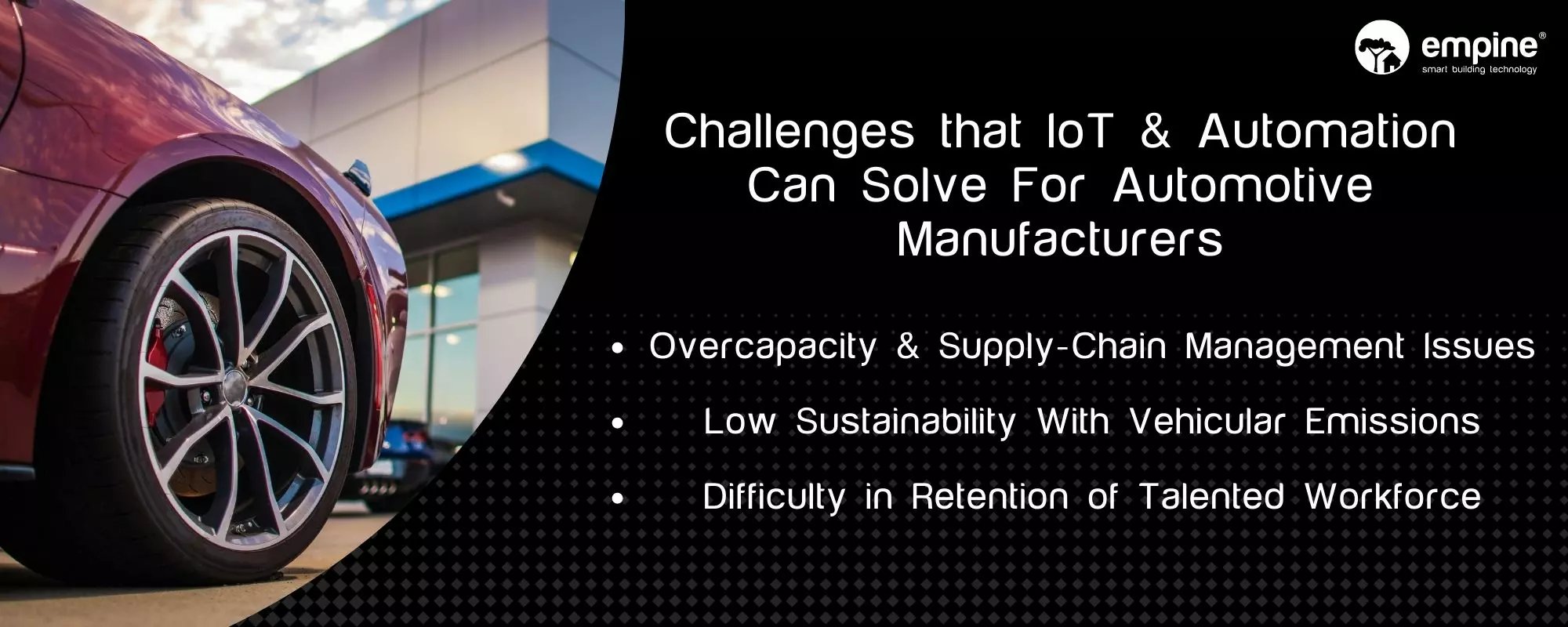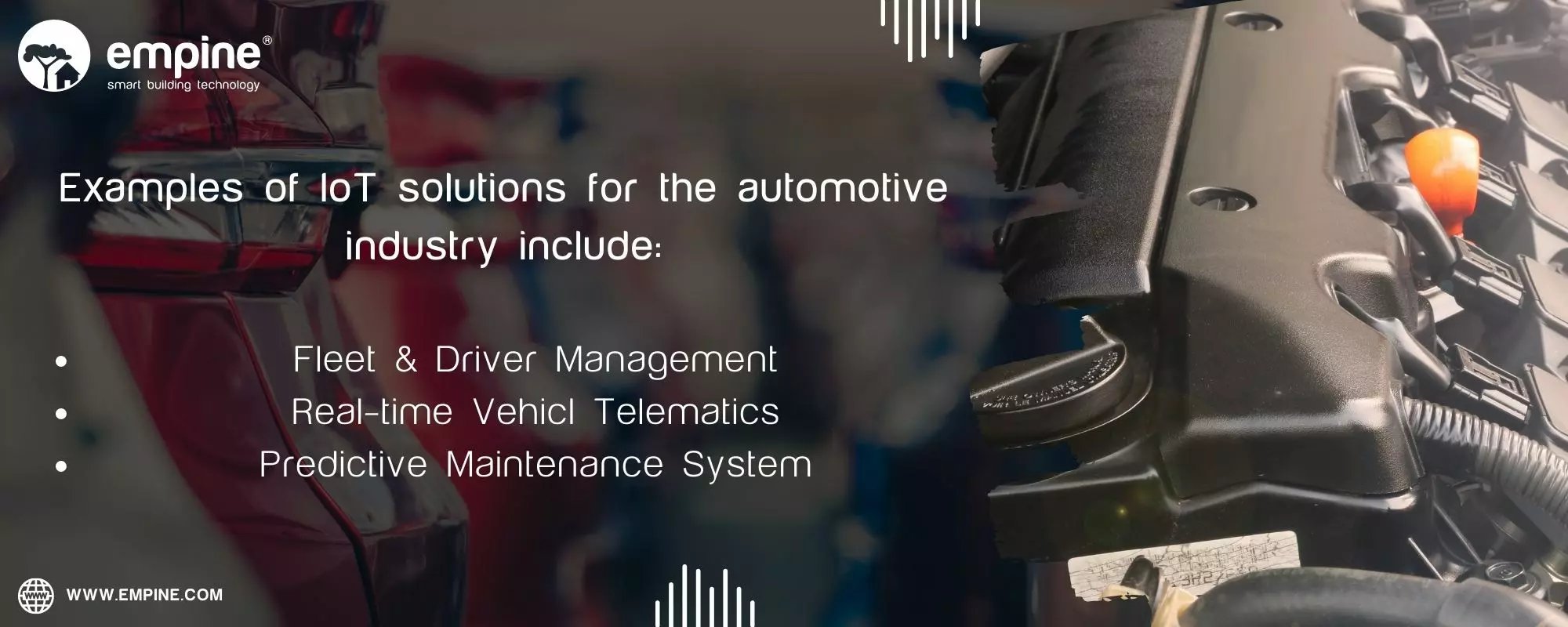oT automotive industry has unfolded new roads for car manufacturers and purchasers worldwide. With use at both modern and business levels, IoT in the car area has turned into a noticeable focal point for multi-region applications. However, the conceivable outcomes of the internet of things for the automobile industry are enormous. With the advancement in the new technology of the Internet of Things, IoT applications in the automotive industry are increasing daily.
What is IoT in the automotive industry?
The Internet of Things (IoT) is rebuilding a few areas, including the automotive. IoT technologies help the automotive industry to create innovative and advanced solutions. For instance, connected car solutions, Advanced Driver-Assistance Systems (ADAS), in-vehicle infotainment systems, navigation & telematics solutions, etc.
IoT has empowered more prominent transportation efficiency in the auto area. Automotive industries and related businesses cannot ignore the significance of IoT in automotive.
According to a Forecast Analysis by Gartner, “The enterprise and automotive IoT platform market will represent an $11.3 billion opportunity in 2025, up at a 33% CAGR from 2020. By the end of the forecast period, the largest revenue sectors will be manufacturing and natural resources, transportation, and building automation.”
Challenges and opportunities for automotive manufacturers
Following are the numerous challenges in the automotive industry that automakers need to understand and evaluate:
· Excess Production and Related Costs
The main challenge the automobile industry is facing nowadays is overcapacity. Hence, with changing supply chain management scenarios, businesses have started investing heavily in developing vehicles that may not need to be produced.
But, when the manufacturer realizes the same, enough finances would have already been drained for various things such as labor, production, raw material, etc.
· Connected Technologies and Their Implications
Connected technologies are also one of the biggest challenges automotive industries are facing. Due to data-driven technology in the automobile sector, digitization is becoming a norm in new vehicles in vehicles. Storing and transferring a large amount of data is a problem with this technology.
· The Self-driving Evolution
Self-driving technology has emerged as one of the automotive industry's main challenges. While the world has embraced technology with open arms, it still has a long way to go mainstream. Thus, numerous companies have already begun to get their technology on the road.
· Sustainability
Nowadays, vehicular emissions have turned out to be a major issue for the global automotive industry. However, the air quality deteriorates daily because of fuel-powered vehicles. Introducing an emissions cap, regulatory authorities want manufacturers to adhere to them strictly.
· Retention of talented workforce
The most significant challenge the automobile industry is facing presently is attracting talent. With changing consumer interest in digitization and a more personalized, the demand for advanced technologies has also increased. There is a requirement for suitable personnel to understand, design, incorporate, and maintain these technologies.

IoT Solutions for the Automotive Industry
Conventional views of the auto industry are rapidly changing with IoT development. Like predictive maintenance, Wi-Fi facilities powered by 3G/4G/5G functionality, and Car2Car connectivity.
Below are some cost-effective and time-saving steps toward different stages of the Automotive Industry. Different IoT solutions are transforming the way people interact with their vehicles.
· Fleet Management
The use of IoT in the automotive sector has brought huge advancements in fleet management. Trucks are integrated with different sensors, such as weight calculation and vehicle tracking. Some of the benefits of fleet management are given below:
- Real-time location monitoring of the fleet
- Tracking traffic conditions on the road.
- Route management
- Time and Driver management
· Connected Cars
Connected cars can communicate bi-directionally. It provides the internet facility to deliver fast transmission of information with other devices both inside and outside the vehicle. Also, this technology increases drivers’ response time through enhanced vehicle communication.
· Automotive Maintenance System
With this maintenance system, an individual can take necessary actions to prevent car parts from sudden breakdowns. For example, dashboard indicators of a vehicle. Mostly, these system alerts are sent to the driver’s phone way before the problem occurs. This helps the driver to avoid component failure while driving.

How is this technology used in the automotive industry?
Today IoT devices are transforming our day-to-day life. Vehicles with IoT technology provide users with performance metrics. One can also control some aspects, such as air conditioning. And with only a few clicks, they can also measure physical health indicators.
Below mentioned are a few applications of IoT in the Automobile Industry:
· Fleet and Driver Management
Fleet and driver management are the most recent IoT use case in the car business. It exploits IoT and offers administrators many advantages in their day-to-day business operations. However, the coordination to screen driver execution is the essential advantage of IoT applications in cars.
There are many advantages of fleet management, such as:
- Vehicle tracking
- Checking fuel use
- Checks details about driver’s health and execution
Furthermore, a major component of the system, vehicle tracking, uses GPS to provide information such as location, direction, and speed of the vehicle.
· Real-Time Vehicle Telematics
A real-time vehicle tracking system is a full security solution. This technology helps to find out the location of a vehicle using different methods like GPS. It also uses other navigation systems operating via satellite and ground-based stations.
The tracking system is fitted inside the car. Moreover, it provides effective real-time location and data. This data can be stored in a computer that can be used for analysis in the future.
· Cellular Vehicle to Everything (CV2X)
CV2X connects individual vehicles by enabling the development of cooperative intelligent transport systems. That helps to reduce congestion and pollution. This automotive solution has the potential to transform data and safety services to enhance travel C-V2X is developed to deliver services, for instance, LTE networks to enable efficient communications.
· IoT-Based Predictive Maintenance
This technology solution helps individuals by evaluating the health and performance of equipment by continuous vehicle asset condition monitoring. The IoT devices can capture the data from different assets and systems that help companies to take creative steps for any event. Events like parts repair or equipment failure before it occurs. Hence, predictive maintenance is generally performed while the equipment is operating under normal working conditions. Lastly, it helps to avoid any disruption in the business.
Conclusion
In conclusion, the Internet of Things is changing and transforming the automotive industry. The development of this field has brought about the rise of earth-shattering headways in autos as far as connected and robotized vehicles. Thus, industries can monitor the health of vehicles at scheduled intervals due to asset monitoring solutions by IoT technology.